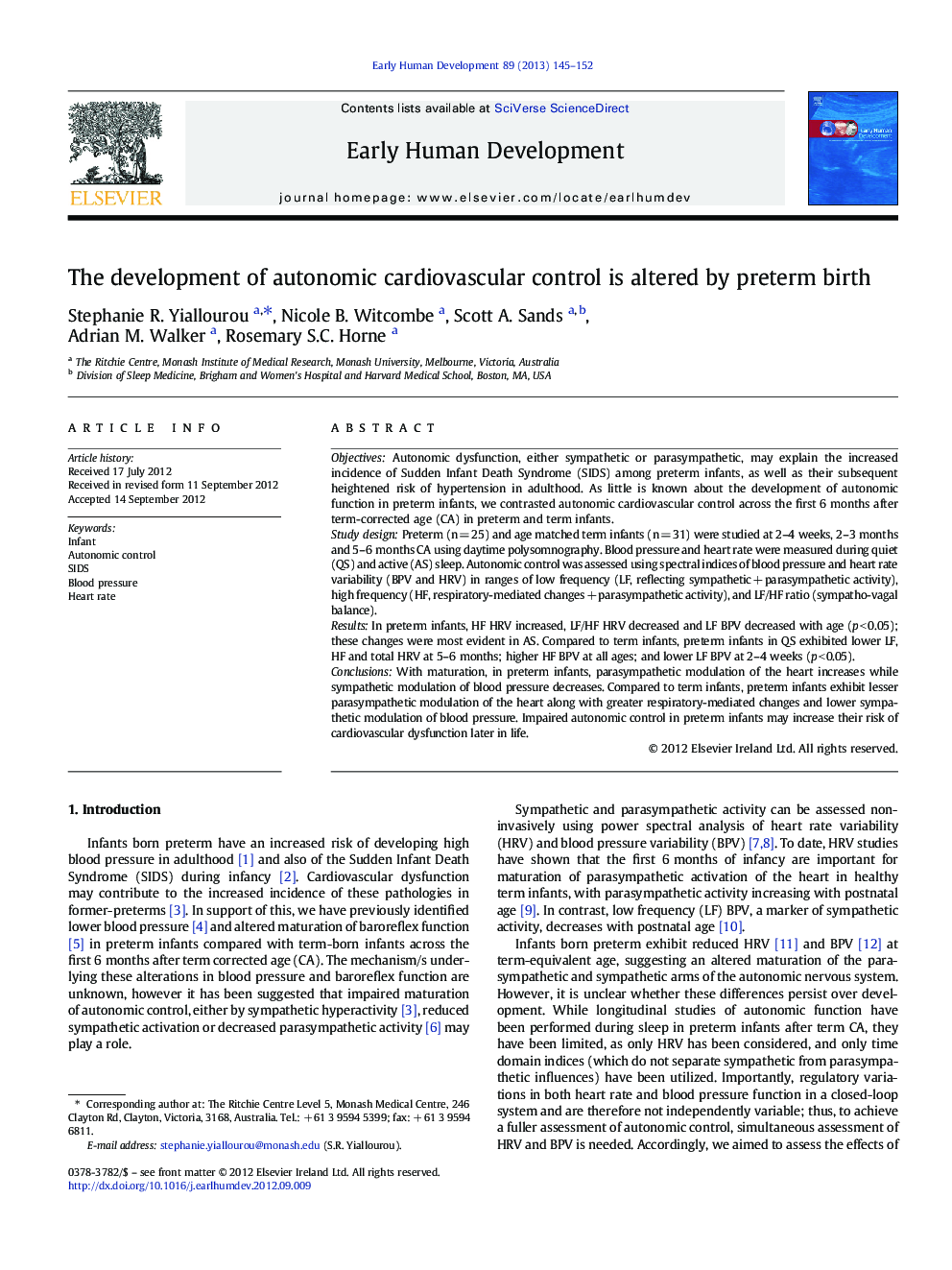| Article ID | Journal | Published Year | Pages | File Type |
|---|---|---|---|---|
| 3918247 | Early Human Development | 2013 | 8 Pages |
ObjectivesAutonomic dysfunction, either sympathetic or parasympathetic, may explain the increased incidence of Sudden Infant Death Syndrome (SIDS) among preterm infants, as well as their subsequent heightened risk of hypertension in adulthood. As little is known about the development of autonomic function in preterm infants, we contrasted autonomic cardiovascular control across the first 6 months after term-corrected age (CA) in preterm and term infants.Study designPreterm (n = 25) and age matched term infants (n = 31) were studied at 2–4 weeks, 2–3 months and 5–6 months CA using daytime polysomnography. Blood pressure and heart rate were measured during quiet (QS) and active (AS) sleep. Autonomic control was assessed using spectral indices of blood pressure and heart rate variability (BPV and HRV) in ranges of low frequency (LF, reflecting sympathetic + parasympathetic activity), high frequency (HF, respiratory-mediated changes + parasympathetic activity), and LF/HF ratio (sympatho-vagal balance).ResultsIn preterm infants, HF HRV increased, LF/HF HRV decreased and LF BPV decreased with age (p < 0.05); these changes were most evident in AS. Compared to term infants, preterm infants in QS exhibited lower LF, HF and total HRV at 5–6 months; higher HF BPV at all ages; and lower LF BPV at 2–4 weeks (p < 0.05).ConclusionsWith maturation, in preterm infants, parasympathetic modulation of the heart increases while sympathetic modulation of blood pressure decreases. Compared to term infants, preterm infants exhibit lesser parasympathetic modulation of the heart along with greater respiratory-mediated changes and lower sympathetic modulation of blood pressure. Impaired autonomic control in preterm infants may increase their risk of cardiovascular dysfunction later in life.
